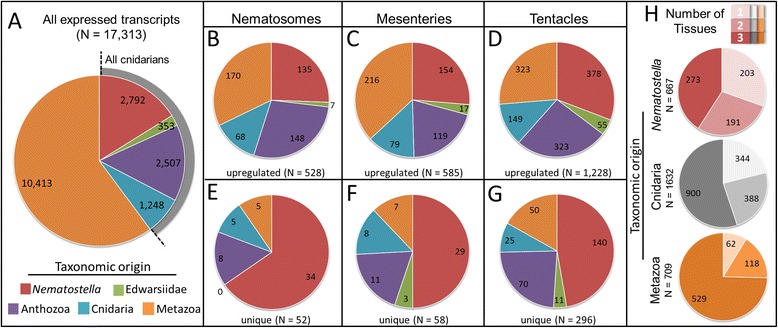Fig. 8.

Analysis of taxon-restricted gene expression. a Of 17,313 expressed transcripts identified in this study, approximately 16 % (N = 2792) are Nematostella-specific, 2 % (353) are Edwardsiidae-specific, 14 % (N = 2507) are anthozoan-specific, and 7 % (N = 1248) are cnidarian-specific. The largest class of transcripts sequenced in this study (60 %) were found in at least one other group of metazoans (N = 10,413). As compared with the complete set of expressed transcripts, (b-d) differentially expressed transcripts were characterized by a higher proportion of Nematostella-specific sequences: 26 % in nematosomes and mesenteries (N = 135/528 and N = 154/585, respectively) and 31 % in tentacles (N = 378/1228). Shared/metazoan sequences comprised less than half of the differentially expressed transcripts in each of the three tissues. e-g Nematostella-specific sequences make up an even larger proportion of the uniquely expressed transcripts in each tissue: 65 % (N = 34/52) in the nematosomes, 50 % (N = 29/58) in the mesenteries, and 47 % (N = 140/296) in the tentacles. h Among the differentially expressed transcripts (illustrated in b-d), Nematostella-specific sequences were more likely to be expressed in only a single tissue (35 %, N = 203/667) than were pan-cnidarian sequences (illustrated in grey in panel a; 21 %, N = 344/1632) or shared/metazoan sequences (9 %, N = 62/709)
